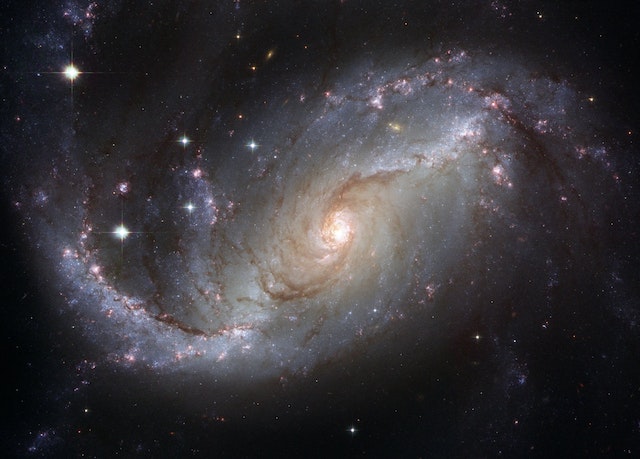Beyond the Stars: Engaging Universe Facts for Kids
Welcome to a remarkable adventure into space! We'll go on a cosmic voyage in this blog, learning fascinating universe facts that are likely to astound and motivate young minds. From distant galaxies to fascinating celestial bodies, we will delve into the wonders of the cosmos, presenting these incredible facts in an engaging and accessible manner. Join us as we encourage children's love of astronomy and spark their curiosity. Let's get started learning about the universe for kids, where the possibilities are endless!
The Vastness of the Universe
The size of our universe is unfathomably large. It spans billions of light-years and is home to a vast number of galaxies, stars, and planets. To put its size into perspective, if we were to travel at the speed of light, it would take us over 93 billion years to cross the observable universe. The sheer magnitude of the universe leaves us in awe of its immensity.
Galaxies Galore
.jpg)
One of the most captivating universe facts for kids is the existence of galaxies. Massive systems of stars, gas, and dust known as galaxies are bound together by gravity. The Milky Way, our home galaxy, is just one of billions in the universe. Some galaxies are spiral-shaped, like whirlpools of stars, while others are elliptical, resembling giant footballs. Each galaxy is a cosmic city, teeming with billions of stars.
Shooting Stars and Meteor Showers
Did you know that shooting stars are not really stars? They are tiny particles called meteoroids that burn up upon entering Earth's atmosphere, creating a streak of light. Meteor showers occur when Earth passes through a trail of debris left by a comet. These captivating displays of celestial fireworks are a treat for stargazers. For instance, the Perseid meteor shower, which takes place in August and provides an amazing view.
Our nearest star, the Sun, is a remarkable energy source. It provides light and heat, making life on Earth possible. Did you know that the Sun is so massive that it accounts for about 99.8% of the mass of our entire solar system? It's a gigantic ball of super-hot gases, with temperatures reaching millions of degrees Celsius at its core. Its powerful gravitational pull keeps the planets in orbit around it.
Fascinating Planets
There are a staggering number of planets in our solar system, and each one has distinctive characteristics. Mercury, the closest planet to the Sun, has a surface that can reach scorching temperatures. Venus is often referred to as Earth's twin due to its similar size but has a thick, toxic atmosphere. Mars, known as the "Red Planet," has intrigued scientists with its potential for harboring life. Jupiter, the largest planet, has a stunning array of swirling storms, including the famous Great Red Spot.
Lunar Wonders
The Moon, Earth's faithful companion, is a captivating celestial object. It is the only natural satellite we have, and it influences the tides on our planet. Did you know that the gravity of the Moon is around one-sixth that of the Earth? That's why astronauts can leap higher and objects weigh less on the lunar surface. The Moon also goes through different phases, from the full moon to the crescent moon, as it orbits around the Earth.
Dazzling Constellations
Constellations are patterns in the night sky created by stars, and people have been fascinated by them for thousands of years. From Orion the Hunter to Ursa Major, these celestial arrangements tell stories and ignite the imagination. The Big Dipper, a part of Ursa Major, is a popular constellation that helps in finding the North Star, which has guided travellers for centuries. Understanding constellations is like decoding a cosmic blueprint that opens up the cosmos to us.
The Mystery of Black Holes
Black holes are some of the most mysterious and intriguing objects in the universe. They are incredibly dense regions in space with gravity so strong that nothing, not even light, can escape their pull. Although they cannot be seen directly, scientists study the effects they have on their surroundings. Black holes are like cosmic vacuum cleaners, devouring matter and energy. They still enthral astronomers and test the limits of our knowledge.
Spectacular Nebulas
Beautiful clouds of gas and dust called nebulae are seen throughout the cosmos. They come in a variety of forms and dimensions, and their vivid colours genuinely inspire amazement. For instance, the Orion Nebula is a stellar nursery where young stars are born. The famous Crab Nebula is a remnant of a supernova explosion, showcasing the incredible power and beauty of the universe. These celestial artworks serve as reminders of the ongoing cycle of creation and destruction in the cosmos.
The Search for Extraterrestrial Life
Do we inhabit a solitary universe? This age-old question continues to intrigue scientists and explorers. With billions of galaxies and countless planets, the possibility of extraterrestrial life becomes a tantalizing prospect. Scientists search for habitable zones, where conditions may be suitable for life as we know it. In order to understand our cosmic Neighbours and shed insight into the possibility of life beyond Earth, missions to Mars and beyond seek to answer these questions.
Conclusion:
As we conclude our journey through captivating universe facts for kids, we hope to have ignited a sense of wonder and curiosity about the cosmos. There is a wealth of knowledge waiting to be discovered in the universe. There are countless breathtaking wonders in the universe, including galaxies, stars, planets, and nebulae. By nurturing this fascination and encouraging young minds to explore the mysteries of the universe, we inspire the next generation of astronomers, scientists, and explorers. Let's keep gazing upward, beyond the stars, and explore the immense cosmos that lies before us.










No comments:
Post a Comment